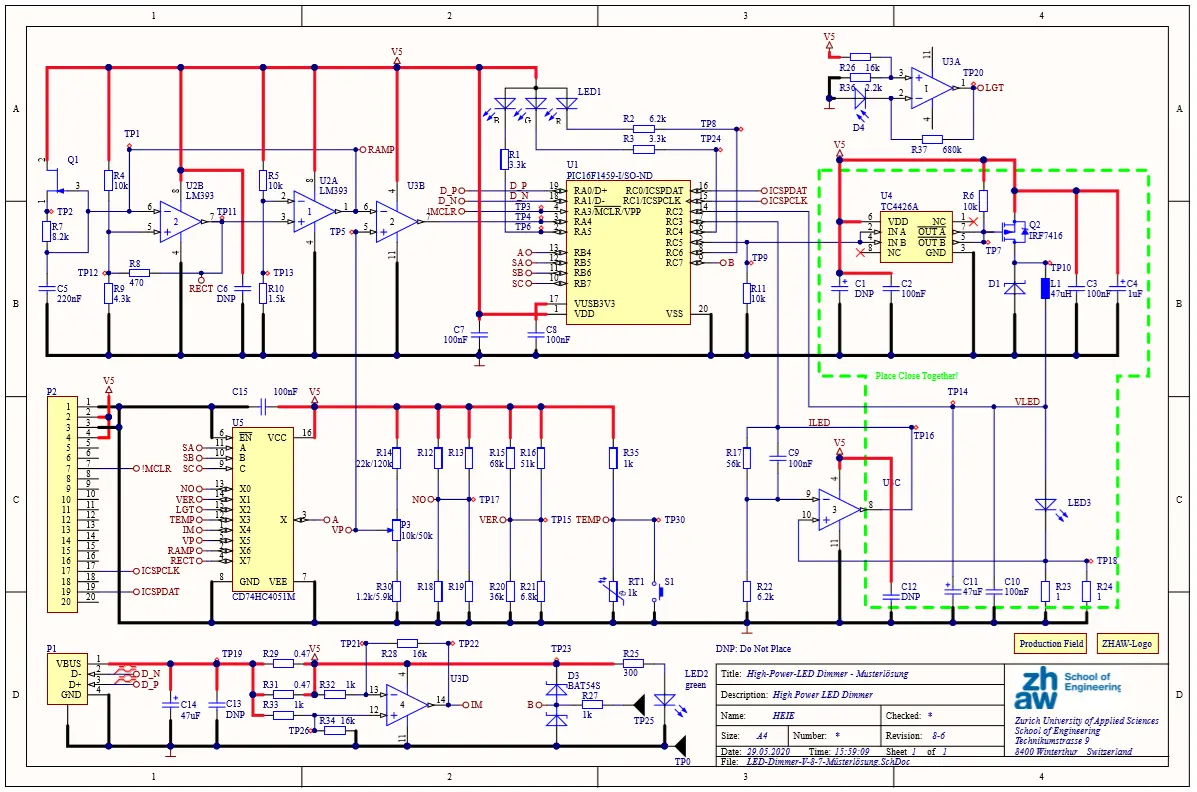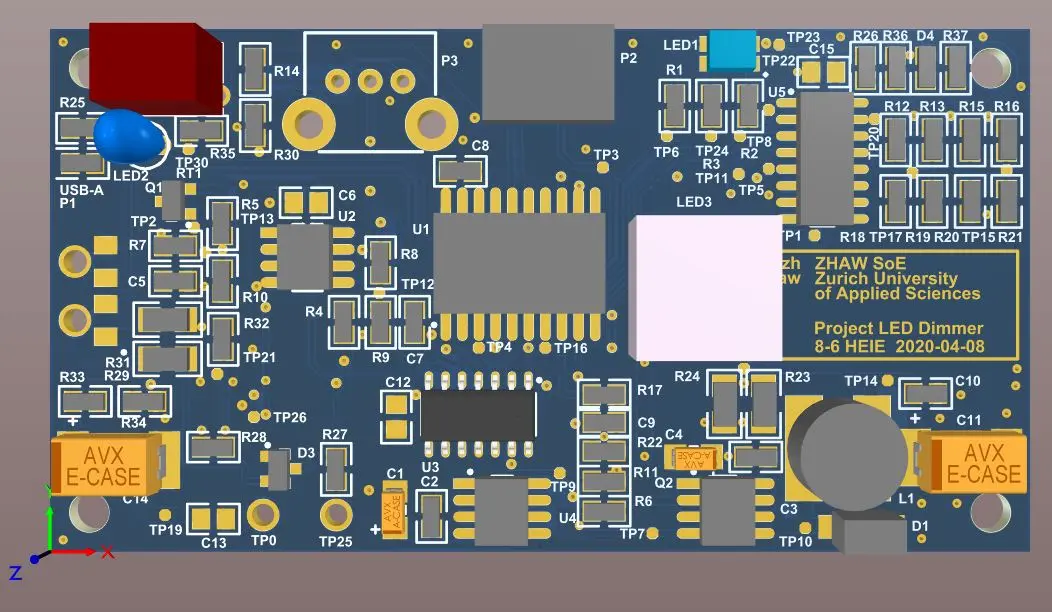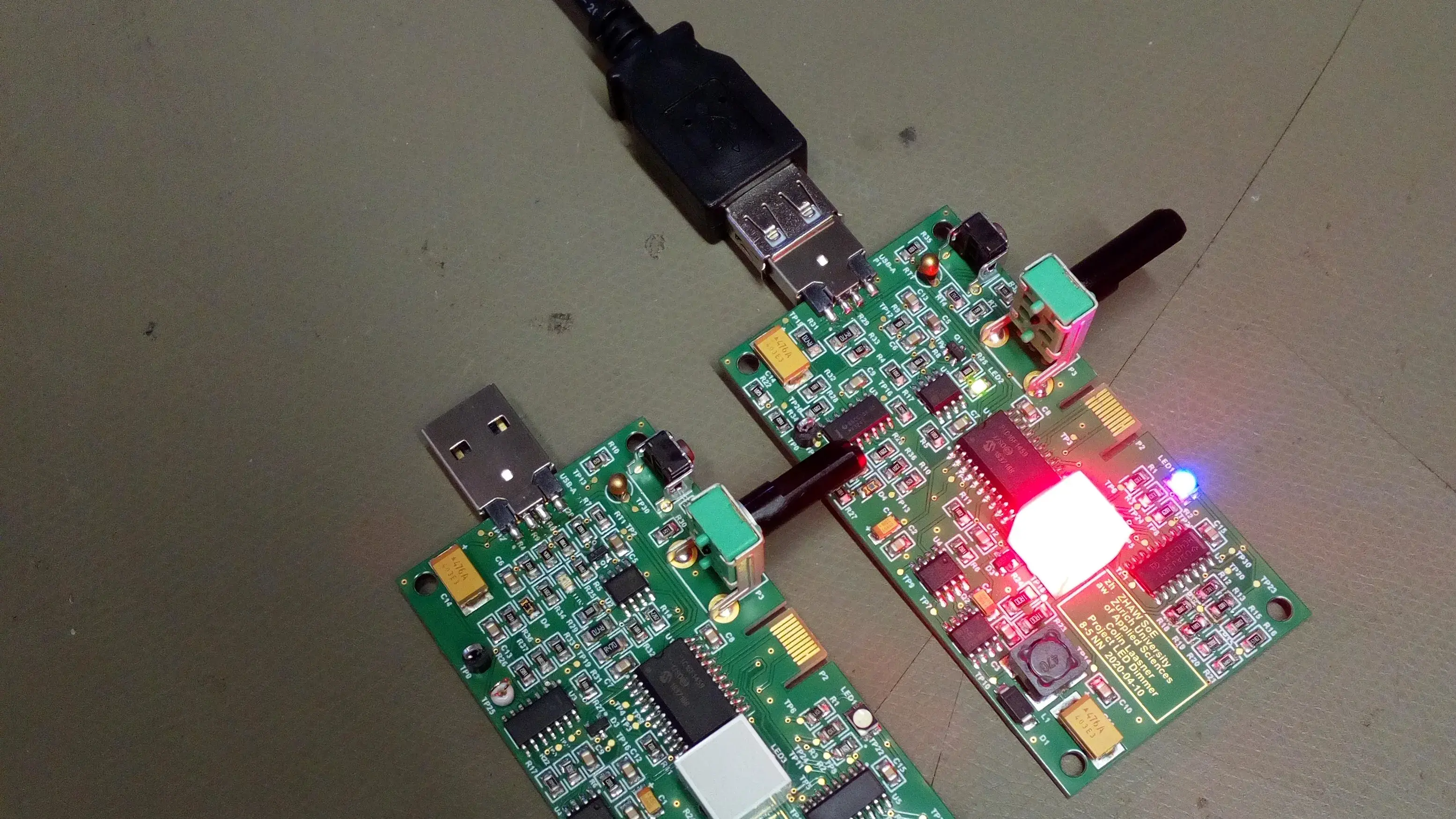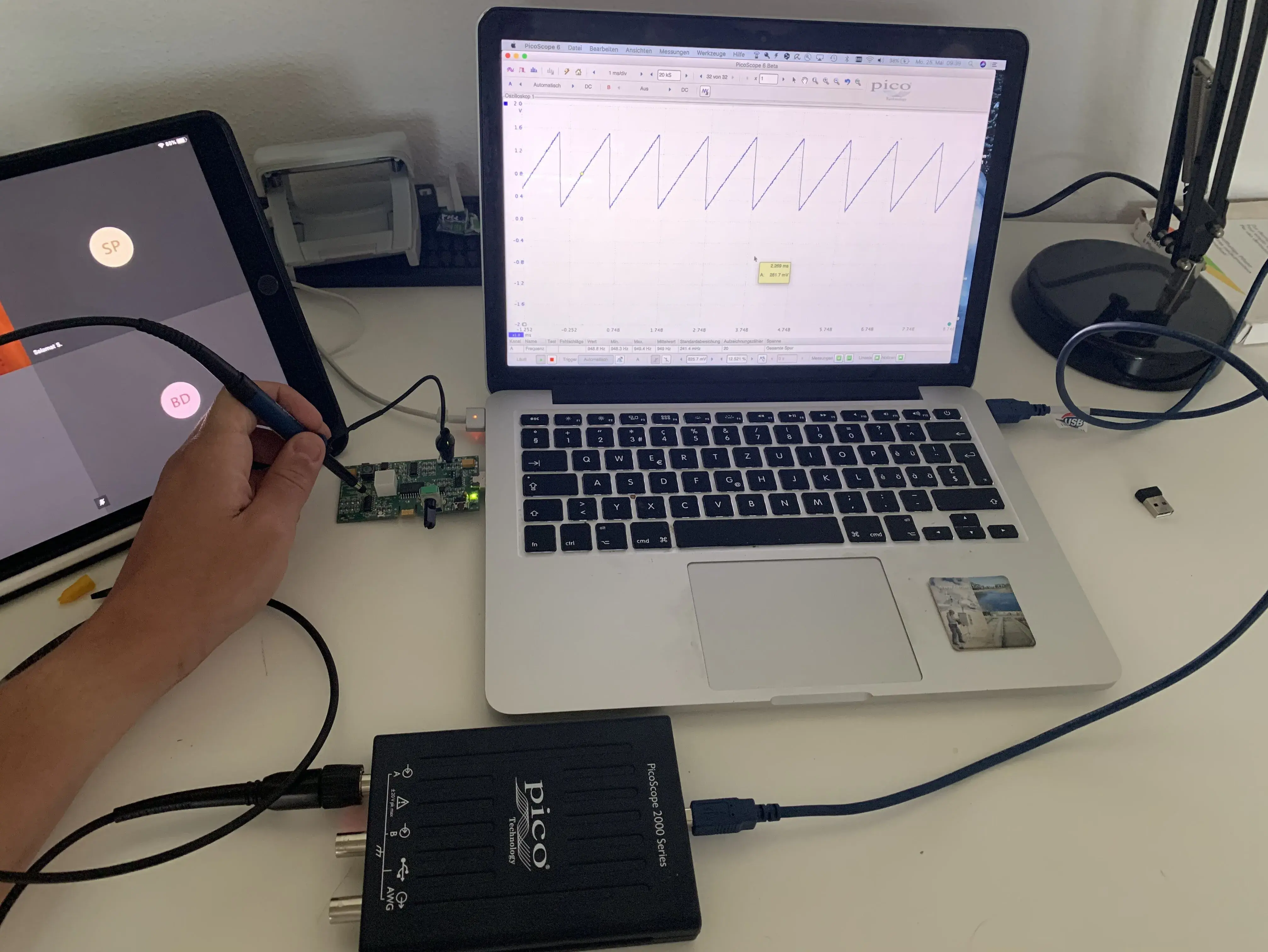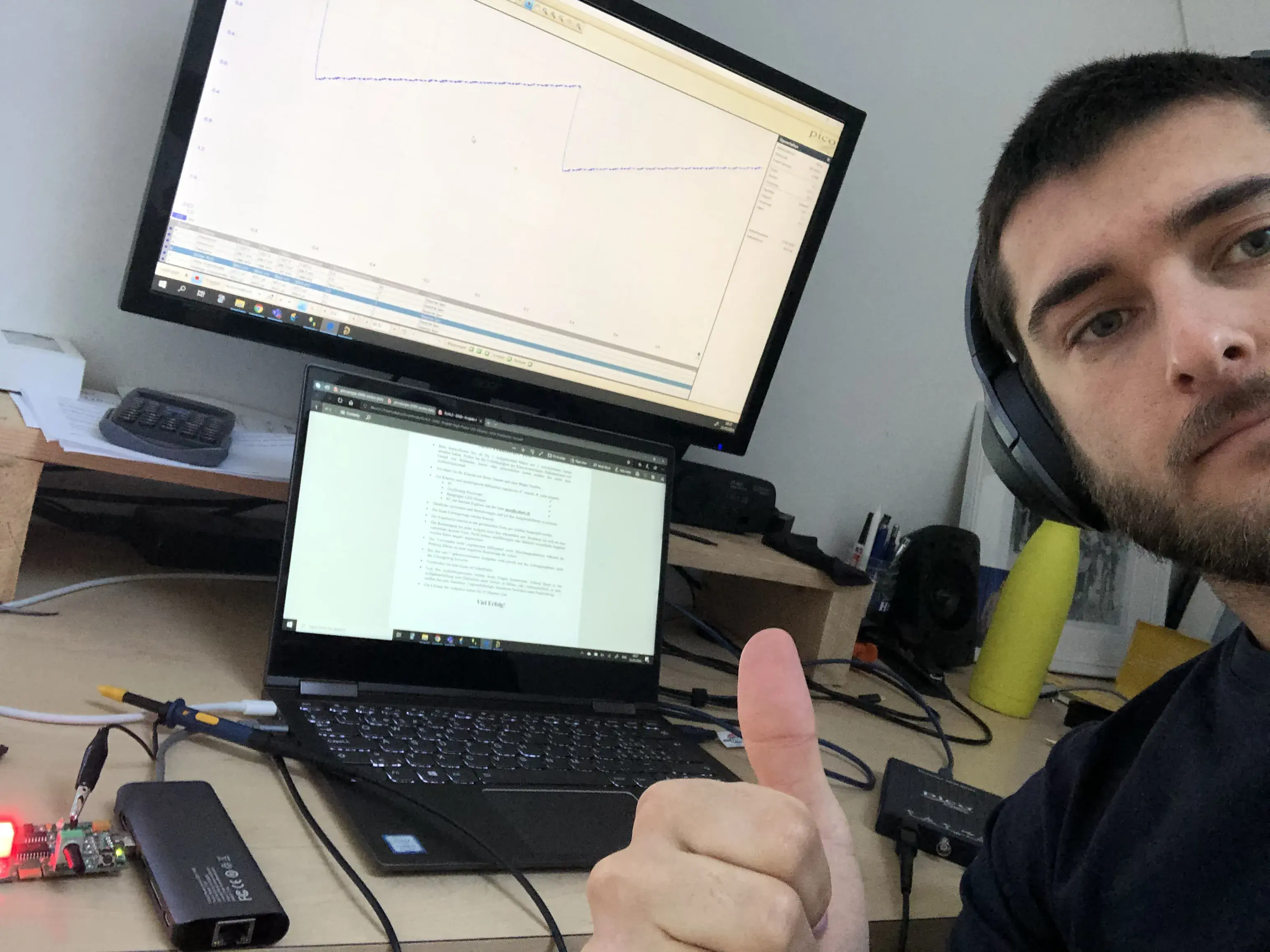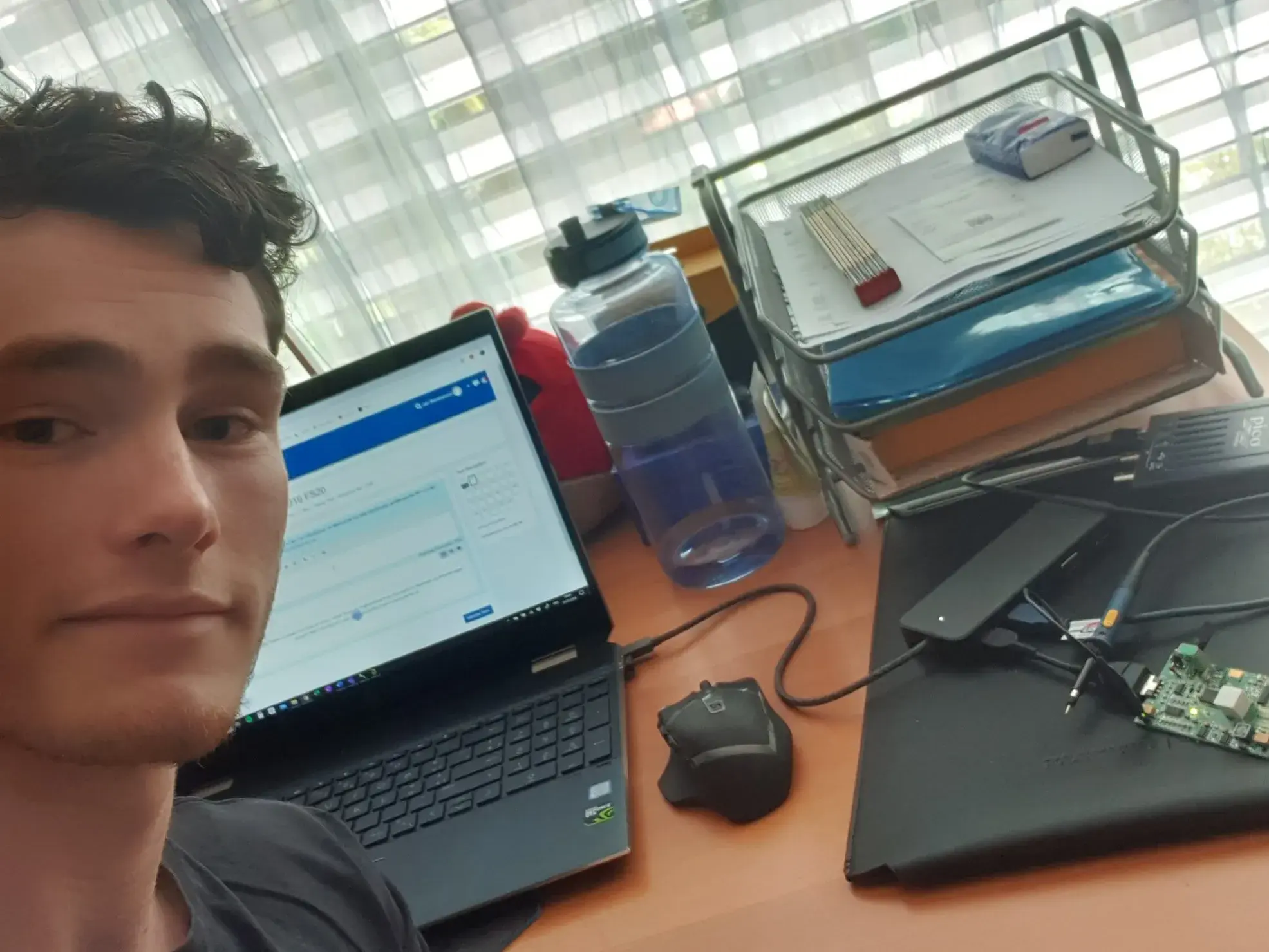Despite Corona: ZHAW students enjoy practice lessons
ZHAW lecturer Andreas Heinzelmann is doing everything he can in the Corona Crisis to provide his students with practical content. Because the laboratories at the School of Engineering are currently closed, he had to come up with an extraordinary idea.
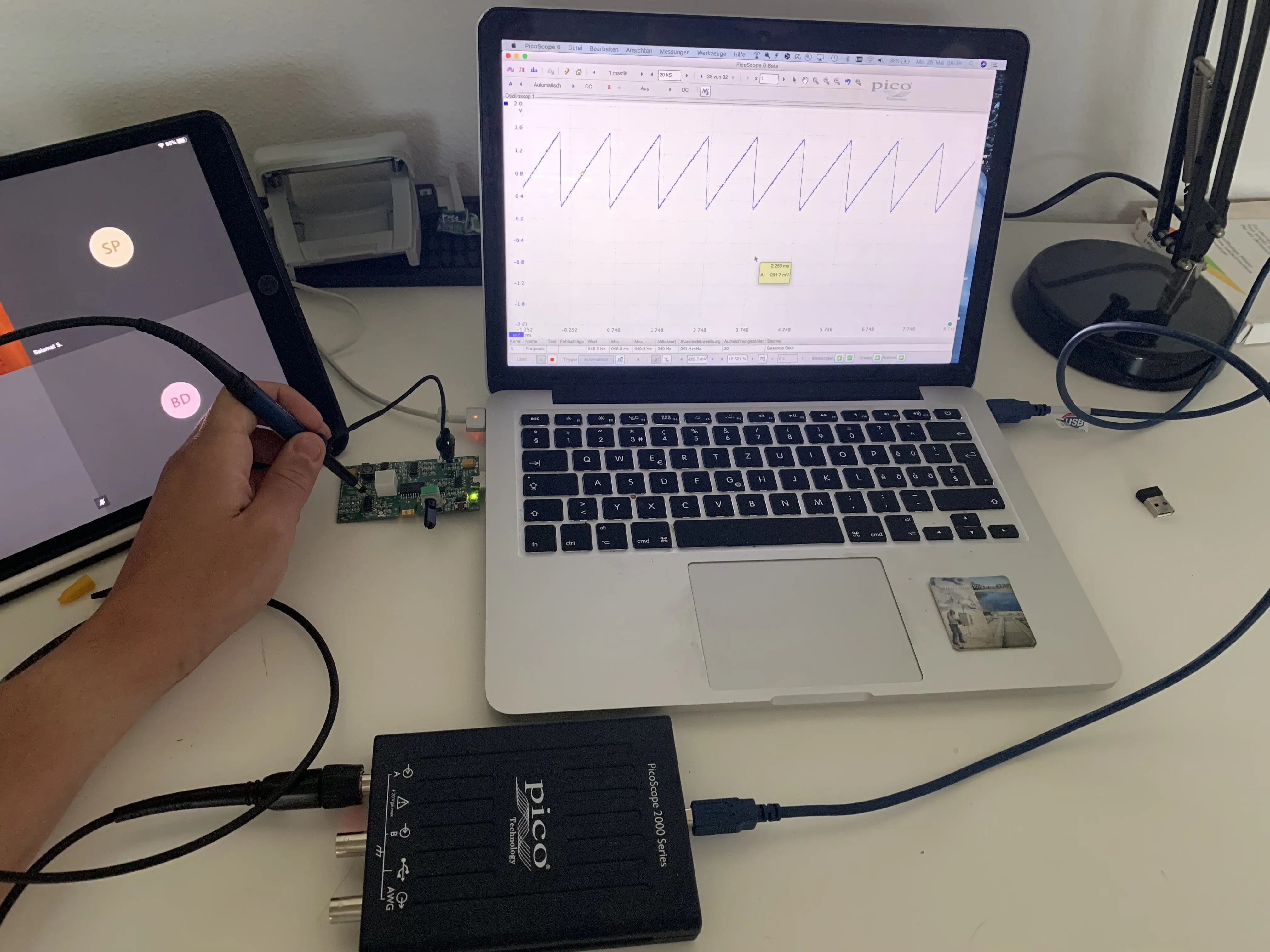
Year after year, the students in the Electrical Engineering and Semiconductors 2 (ELHL2) module in the Energy and Environmental Engineering degree program deal with the design and measurement of a highly efficient LED control. "What can normally be done in our laboratory is currently a real challenge," says Andreas Schellenberg. He is part of Andreas Heinzelmann's Electrical Storage Systems and Power Electronics research group at the ZHAW Institute of Energy Systems and Fluid Engineering (IEFE). Together, the two researchers have decided to move the laboratory to the students' homes this year.
More effort for preparation
Under normal circumstances, the ELHL2 students create a schema of the LED dimmer and then a layout in class. They then assemble a circuit board with all the necessary components and commission the dimmersv after measuring it. "Our students were able to create the schema and layout as planned," explains Andreas Schellenberg. However, the assembly, which normally takes place in the laboratory at the university, had to be done by an external electronics service provider due to contact restrictions.
Andreas Schellenberg was responsible for the last step: "Because the students are not allowed on campus at the moment, I put all boards into operation myself, which involved a lot of effort." ZHAW researchers Heinzelmann and Schellenberg then sent the finished boards home to the students along with newly purchased oscilloscopes.
The laboratory in the own four walls
Sirius Vollenweider is one of the students of the ELHL2 module. He appreciates the additional effort of his teachers: "I was very relieved when I received the package with the ready-to-use LED dimmer and immediately started using the oscilloscope". In Distance Learning, the students received an introduction to measurement technology and measured the electrical properties of the LED dimmers with the help of the oscilloscope. The crowning glory was – how could it be otherwise – an exam. "The students were given the task of measuring certain predefined test points on the LED dimmer and submitting the results online," explains Andreas Schellenberg. In order to check whether the students were really carrying out the measurements themselves, they also had to take a picture of themselves and the LED dimmer.
Schellenberg and Heinzelmann have prevented students from helping each other in the exams by individual characteristics of the circuits. Despite this measure and despite the "evidence photos" Andreas Schellenberg says: "We could not guarantee beyond doubt that the students would solve the tasks themselves". In such a situation, he says, one must trust the students and rely on their honesty.
An emergency solution for the future
The improvised distance learning lab was a welcome change for the students. Sirius Vollenweider and his fellow student Mario Prakljacic see it as a useful supplement to their attendance at the university. Prakljacic explains: "Distance learning makes studying more attractive because it increases flexibility". Vollenweider adds: "It has had a positive effect on the quality of teaching. With recordings many things are easier to understand in repetition than in frontal teaching".
Andreas Schellenberg sees it differently. For him, distance learning for practice-oriented modules such as ELHL2 at universities of applied sciences is no more than a stopgap solution. Franz Baumgartner, head of the Energy and Environmental Engineering degree program, is enthusiastic about the creative initiative of Schellenberg and Heinzelmann, but says: "The example shows very clearly that digital media cannot do everything and that only a little relief has been found with the laboratory exercises at home. For him it is clear that the strengths of his course of study cannot be fully realised without classroom instruction: "Our complex and diverse laboratory equipment cannot be delivered to your home by parcel service – just as little as the individual real-time instructions from our experts on site".
